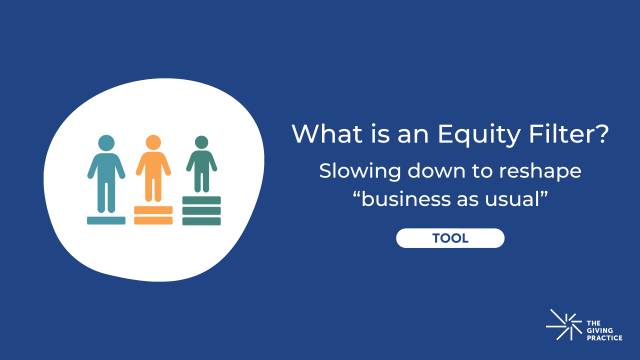
We all know that foundations are very powerful. Part of the challenge of philanthropy is how grantmakers listen to circumstances on the ground, versus imposing a cookie-cutter approach to incite deeper collaboration with grantees, while developing a more complex appreciation for their partners and how these different actors are connected within an individual landscape.
My goal as a grantmaker was to empower the grantee to take ownership of planning the grant so that the work and investment could be owned by the grantee. Doing so required letting go of control and trusting in the partnership as a learning opportunity for the foundation.
We funded a third-party consultant to write a plan for a specific grantee. We thought we were doing the grantee a favor by bringing in a consultant, but the implication was that the organization didn’t buy-in to the plan and distanced themselves from it. This was reflected in the program’s progress and communications. By the third year of the grant, the program was at risk of termination. I stepped into the role of managing the grant and after one week on the job, I introduced myself to the agency that was managing the program and let them know it was in danger. The grantee and I both realized we had the wrong individuals managing the grant. We made additional resources available to engage a recruiter to identify and hire a team of people to take over the management of the project. We learned that we needed to be more transparent in our communication to identify prescriptive action, gaps and consequences.
It was clear to me that members of other agencies were critical partners who had never been engaged or held accountable for their commitments. I could see the connections between and among these agencies and went on field visits to understand the circumstances that existed and didn’t conform with grant agreements and helped to connect the dots and reinforce the importance of these partnerships. I was being able to see beyond the specific grantee, to connect the different elements and how one pulls those together into a coherent team to create success.
It’s easy to get stuck by fighting against the myriad of factors in play at any given time, or by believing that what has worked in the past will work in the future – both common challenges in philanthropy. My Zen practice has helped shed light on understanding that the past, present and future are encompassed in the “here and now.” We sometimes call it seeing 180 degrees, in all directions at the same time. That is only possible when one is not so fixated on a predetermined solution or the past, so one can actually be the change one experiences rather than fighting it.
Picture a kite in the midst of a hurricane. Battered and shredded by winds, it is tethered by its tail and fixed to a point. What happens when that tail is cut and the kite is free to move with the hurricane? There is no fighting against the swirling wind and force of the hurricane. The kite becomes the hurricane – it is one with the hurricane.
For more information about Reflective Practices, please click here.



